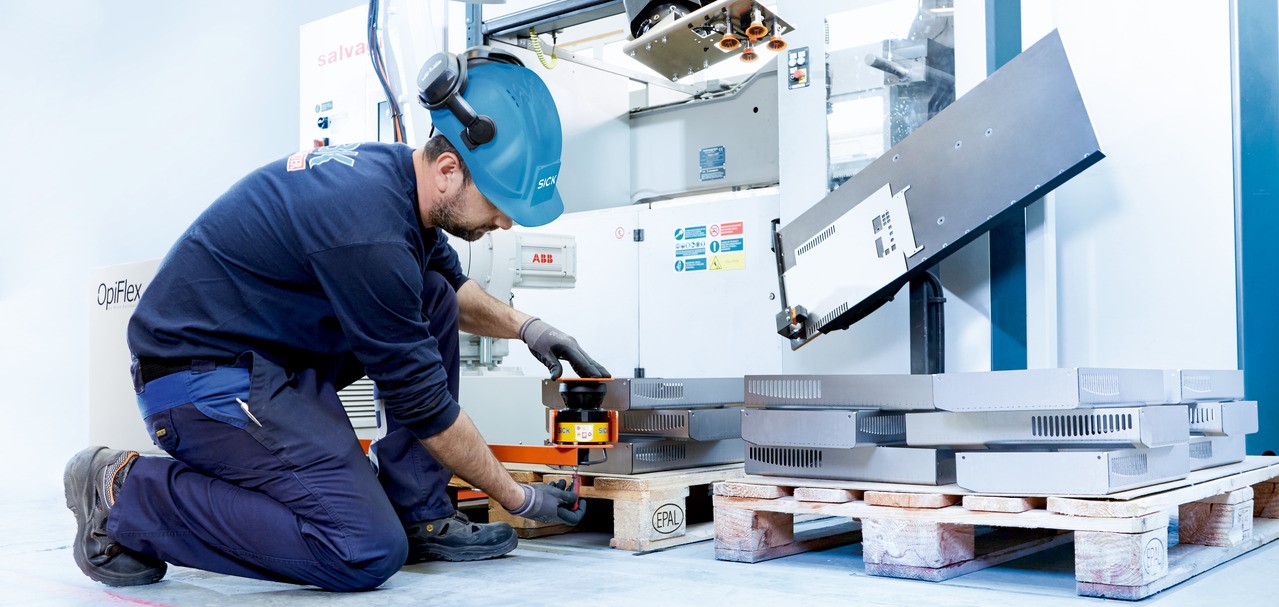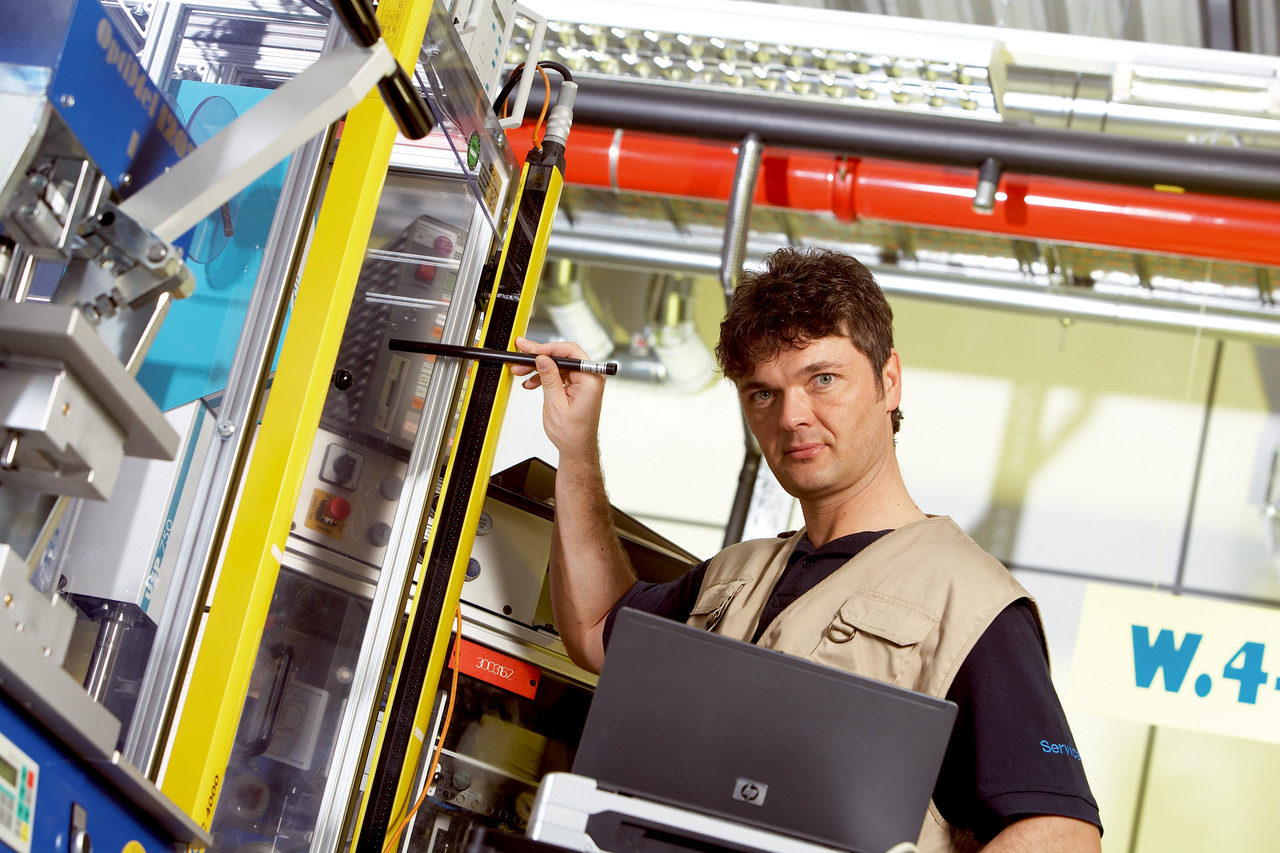

SGS-TÜV Saar – Certified Functional Safety Application Technician (CFSAT) Training
Introduction
Manufacturers and operating entities bear full responsibility for the safe operation of machinery and plant. As a technician, service technician, machine operator or safety representative, you can make a significant contribution to legal certainty and safety in your work place.
By participating in this training, you will benefit from the many years of experience of our experts in the field of machine safety and discuss current topics relating to functional safety on an equal footing. Following the training, you have the option of taking the “Certified Functional Safety Application Technician (CFSAT) – SGS-TÜV Saar” test and receiving the corresponding certificate.
At a glance
- Three-day classroom training, tailored to the requirements of technicians
- Well thought-out combination of theory and practice with a high degree of interaction
- Training offered worldwide
- Globally recognised certificate from SGS-TÜV Saar and SICK
Who should enroll
- Technicians, service technicians, machine operators, safety officers, engineers with a need for knowledge on safety of machinery
- Suited to end users, system integrators and OEMs at the industrial automation area
Prerequisites
- At least 2 years of work experience with industrial machinery
- Basic knowledge in automation technology and familiarity with the requirements of electrical safety
Duration Pricing (excl.GST) per person
Classroom seminar: 3 days ----------------- NZ$3,235.65 (part no. 1614670)
Online exam ----------------- NZ$ 610.50 (part no. 1615884)
Sign up for the training
Your benefits
- Experience training conducted by experts with extensive technical know-how, years of experience in machine safety and knowledge of local safety requirements
- Acquire the ability to evaluate protective measures on your machines and thus make a decisive contribution to operational safety in your company
- Benefit from structured, practical knowledge transfer and helpful training material for your daily work
- Use the “Certified Functional Safety Application Technician” title on your business card
Objectives
- Inspection of the installation of protective devices
- Identification of hazards
- Identification of safety relevant impairments for machine operators
- Application of measures to maintain operational safety
- Support when purchasing machines with safety-related requirements
Participants learn
- that fundamental standards and regulations for safe machinery are relevant (e.g., ISO 12100/ AS/NZS 4024.1201, ISO 13849-1 / AS/NZS 4024.1503, and EU Machinery Directive, EU Work Equipment Directive, ANSI B11.19, NR12)
- how and where to find related standards and regulations
- what has to be observed in general for the installation of selected protective equipment and the reliable usage thereof

Participants will understand
- the need for and the procedure of risk assessment and identification of hazards
- the differences between the various protective devices regarding functionality, application and relevant parameters (excluding hydraulics and pneumatics)
- the importance of correct installation of the protective equipment
- the need of regular verification of protective measures
- basic terms of machine safety and the definition of a safety function
- the relevance of modifications to a machine with respect to safety of machinery
- the necessity of legally compliant documentation
Participants will be able to
- understand and document protective devices and their mode of operation using an example application
- derive necessary activities to check the protective measures
- identify defeating of protective equipment and suggest countermeasures
- perform and document verifications according to a specified test plan
After the training, participants are able to fulfill these tasks:
- Check of the correct mechanical and electrical installation of protective devices
- Evaluate and verify protective devices according to a specification
- Identify hazards
- Suggest protective devices
- Support the purchasing department to specify the safety related requirements for machines and production lines
- Propose activities to sustain the safety of machinery
- Recognise safety related impairments for machine operators and shortcomings in machine safety

Agenda
Day 1
Introduction
- Cooperation TÜV Saar & SICK
- Legal fundamentals
- 6 steps to safe machinery –general proceeding
- Requirements of the EU and the intentions (CE, enabling the EU market)
- The relevance and priority of laws, directives and standards
- Different stakeholders (user, manufacturer) – different directives –similar obligations
- Risk assessment for new machines (manufacturer)
- Risk assessment for hazards caused by the installation (machine end user)
- When a machine user becomes a manufacturer
- Definition of a machine What falls under the machinery directive and what doesn’t?
- The general requirements of the CE mark
- International, regional and national standards
- Differences between type A, type B and type C standards
- Type C standards for specific machine types
- General indications about occurring hazards and possible solutions
- Type C standards always have priority over Type A and type B standards
- Procedure during risk assessment
Risk assessment
- Who must perform a risk assessment?
- What is the content of a risk assessment?
- The risk assessment and risk reduction process (3-step method)
- Machine phases of life (machine life cycle)
- Risk assessment continued by machine user based on residual risk from manufacturer
- Risk assessment methods
Risk reduction
- 3-step risk reduction method
- (Safe)Design principles
- Physical/ non-physical guards and a selection tools (ISO 12100 / AS/NZS 4024.1201)
- Different requirements for hazardous point, access and area protection
Day 2
Safe design
- All aspects –electrical, mechanical (constructive), (micro)ergonomic, light, noise, etc.
- Electro-magnetic compatibility (EMC)
- Incentive for manipulation
- Requirements for safety
- Short circuit, cross-connection, power and device failure
- Counter measures: dual channel, test pulses, forced-to-open contacts, redundancy
Physical guards
- Types of physical guards
- Monitored access
Interlocking w/ w/o locking systems – selection tool (ISO 12100 1 AS/NZS 4024.1201)
- Installation requirements (fastening elements)
- No new hazards arise when accessing/ opening physical guards
- Stopping times & calculation for physical guards (S=KxT)
- Heights, distances, body values for upper & lower limbs (ISO 13857 / AS/NZS 4024.1801)
- Unlocking by timing, automated, manual
- Position switches with advanced manipulation protection
Non-physical guards (AOPD/AOPDDR)
- Protection types (hazardous point, access, area protection)
- Stationary machines or mobile platforms
- Functionality of AOPD and AOPDDR
- Appropriate safety distance for respective resolutions (ISO 13855 / AS 4024.2801, S=KxT+C)
- Avoiding reaching over, under, around protective devices
- Different types for different applications (AOPD, AOPDDR, Camera based)
- PLr depending on the result of risk assessment
- AOPDDR –max PL d
- Reflection, mirroring and counter measures
Emergency STOP ≠ Emergency OFF
- HW requirements: yellow background, red button, manual reset (locally)
- Functional requirements:
Latchable, stop categories, visibility, accessibility,
machine assignment, must be functional at all times
- Different types: push buttons, rope switches
- Emergency Stop ‘complementary measure’ does not reduce risk
- Emergency Stop always has priority over all other functions
- No further hazards, when Emergency Stop is actuated
- No restart of machine movements upon reset
- EMO switches off the energy supply
Day 3
Functional Safety
- Safety Functions split in subsystems –integrated in machine safety control system
- Input –logic –output = safety function (safety chain)
- Many different safety functions available
- Mostly more than one required to sufficiently realise a protective measure
- Difference requirements for standard and safety components –5 pillars
- The performance level of an SRP/CS is estimated via quantifiable (e.g., category) and qualifying aspects (e.g., safety related software).
- Complete safety chain must meet PLr (a, b, c, d, e acc. ISO 13849-1 / AS/NZS 4024.1503)
Administrative measures
- Signs, instructions, PPE, training –last step in 3-step method
- Pictograms preferred
- Additional measures: audible alarm, light tower, rotating light
- Operating instructions: original language and additional country related language
- Possible hazard signs for existing residual risk
- Required knowledge level for operating personnel (training requirements)
EU requirements acc. work equipment directive
- Occasion related inspections
- Upgrading –state of the art technology
Inspections based upon the work equipment directive
- What shall be checked and why (2009/104/EC)
- Full coverage of the protected area (test equipment)
- Appropriate installation, reaching over, under around, climbing/ stepping on or over
- Closed gaps, safety distances (additional equipment –e.g., 2-hand-control) stopping time, lighting, ergonomics, mirroring, reflection, machine upgrades, manipulation
- Documentation of alterations, modifications & upgrades
